Carving out a name for herself in the regional and – more recently – international art world, sculptor and installation artist Jaffa Lam tells Andrew Dembina about her respectful inclusion of seamstresses’ and metal workers’ craft in her artwork, and of the bright future for other Hong Kong artists and art students
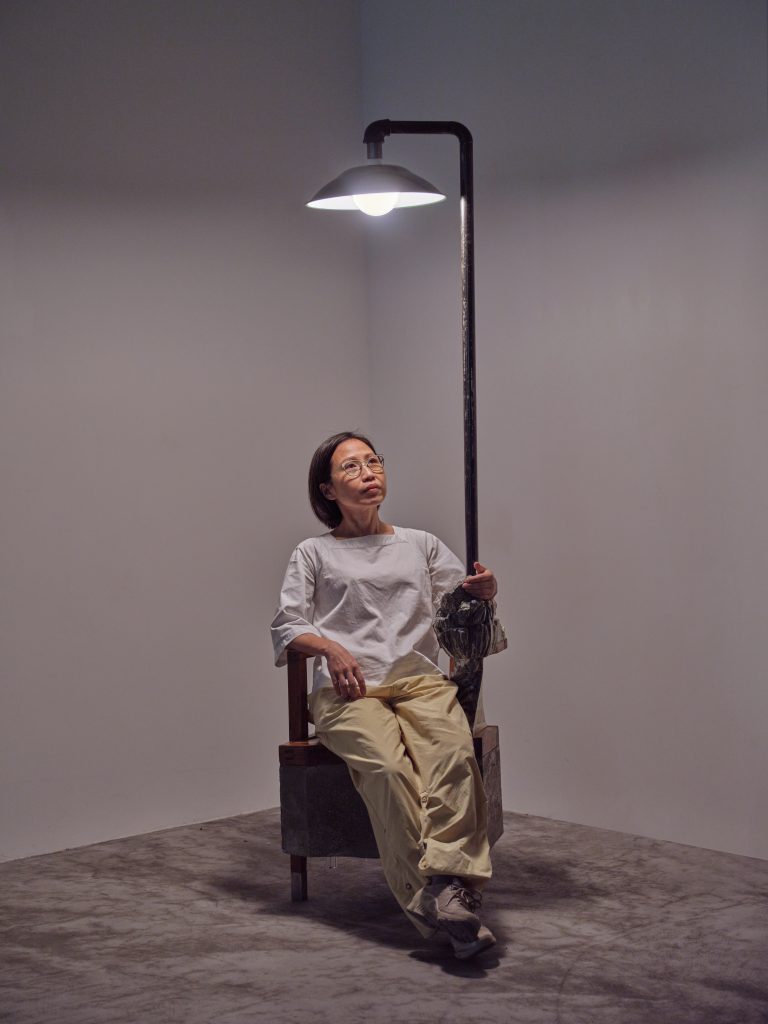
Jaffa Lam, the Hong Kong-based site-specific sculptor and installation artist as well as academic head at Hong Kong Art School, claims not to be a fan of the limelight. But her large installation Trolley Party at Art Basel Hong Kong in March, preceded by a solo show of artwork mostly from the past 10 years at the Axel Vervoordt Gallery in Wong Chuk Hang, has put her centre stage as one of the territory’s most talked- about artists of the past few years.
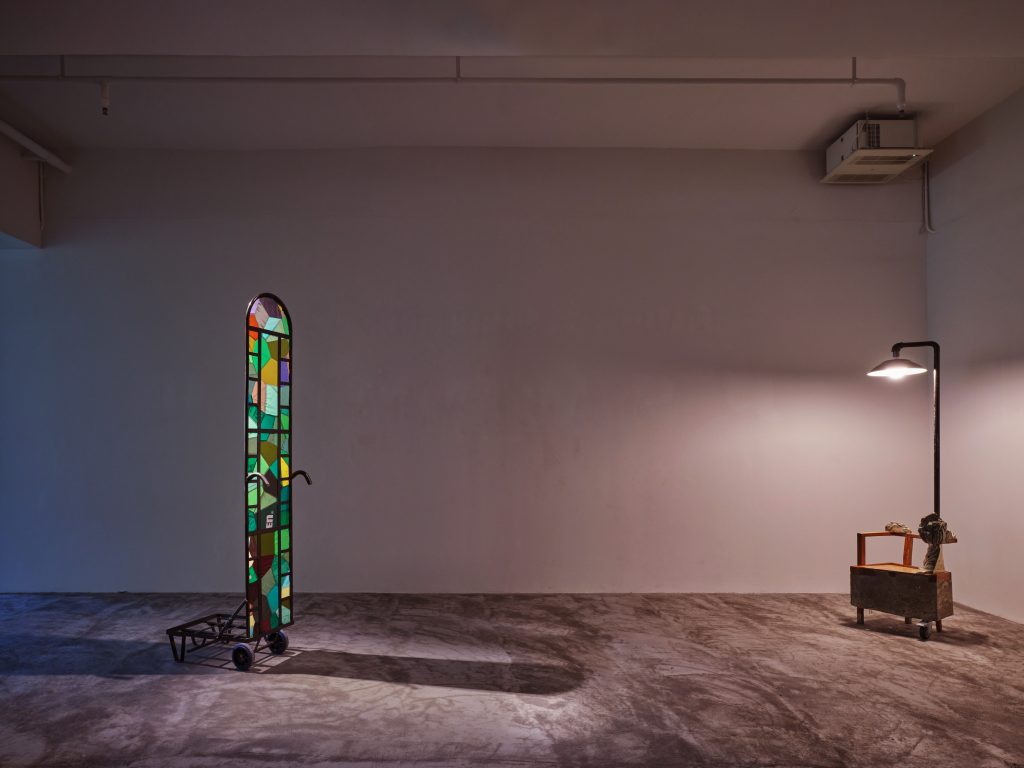
There will be another solo exhibition with Axel Vervoordt at its flagship Antwerp gallery in Belgium this September, which will also include some of the 50-year-old’s earlier artwork. The common factor of all eras of her work, she says, is a focus on materials used and how they fit into the space around them.
Knowing that Lam uses bags of cement, and is often sanding and filing to create her imposing mixed- media pieces, one might expect creative disarray in her tall-ceilinged Fo Tan studio. But things were looking neat and tidy during our interview, which could reflect a very orderly way of working. On the contrary, she insists the space rarely sees visitors and is usually “messy and full of dust” – whether wood, concrete or iron.
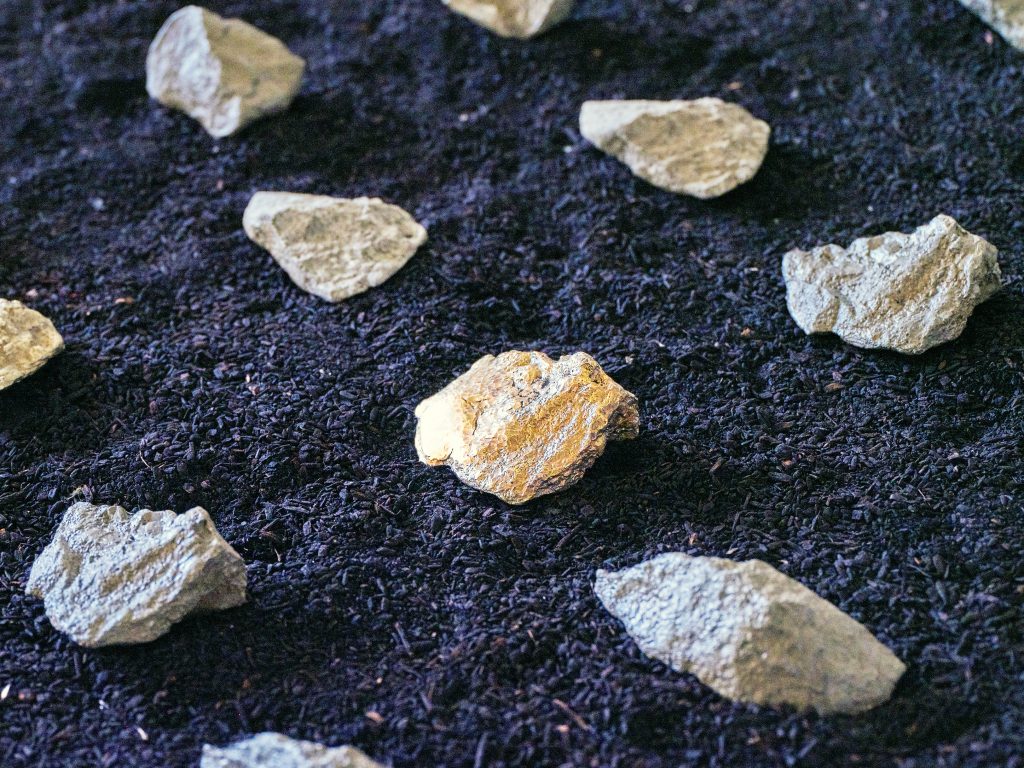
Lam has also sourced sculpture and installation components through an established collaboration with fabric seamstress members of the Hong Kong Women Workers’ Association (HKWWA) and blacksmiths and metal workers in Hong Kong for more than a decade. These elements, which see Lam spending a lot of time guiding production, have resulted in artwork shown in Taiwan and other overseas art spaces.
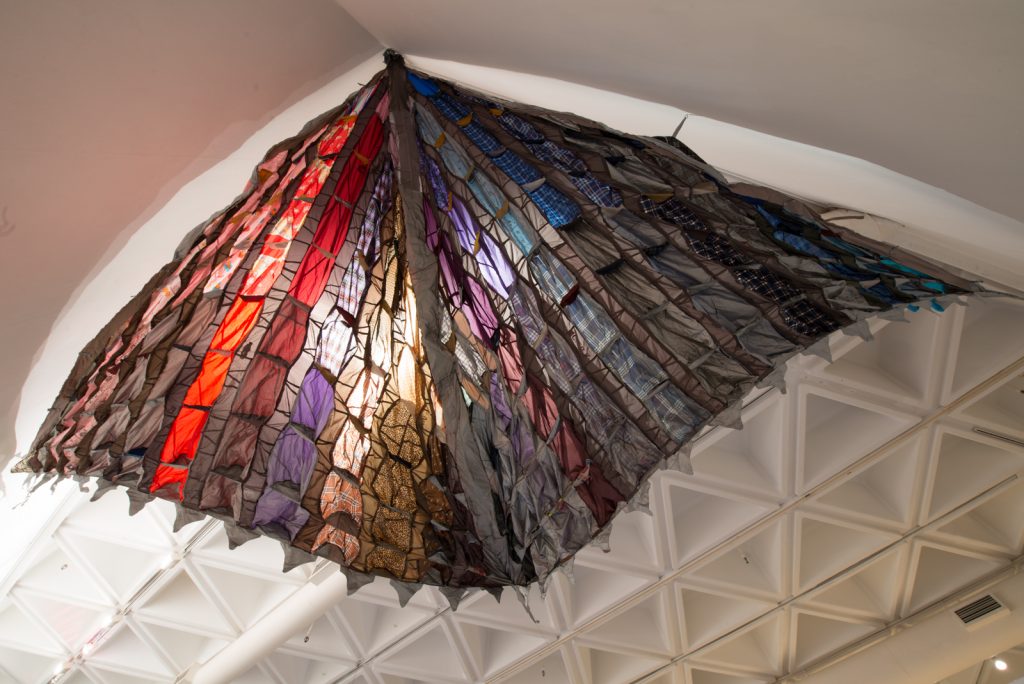
She used both these elements in Trolley Party, whose large blue canopy suspended from the ceiling allowed visitors to look up and notice the patchwork shapes of recycled umbrella fabric sewn together. Lower parts of canopy edges were tied to six metal flat-base trolleys, each submerged into a concrete block. All added up to a classic Jaffa Lam installation.
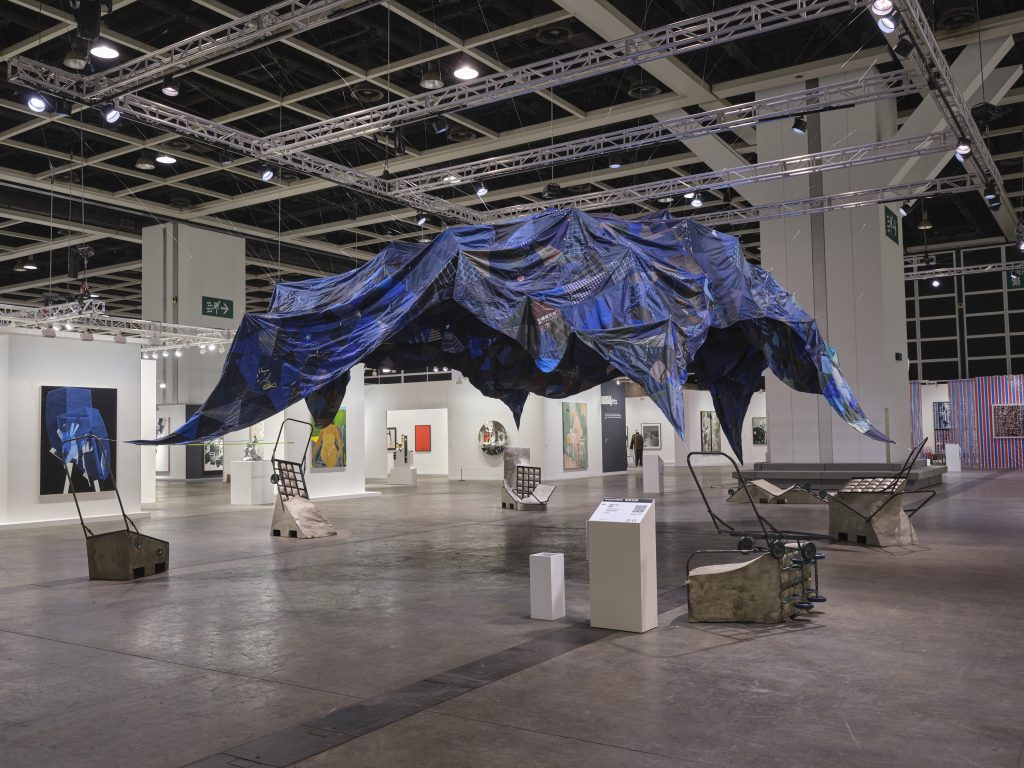
How did you feel having such a prominent artwork at Art Basel?
I had to think very carefully about it when I got the invitation to make an artwork for the fair. I don’t usually show my work in very commercial spaces – and I don’t go to many big exhibition opening events. My work is often connected with what is happening in the community, so I thought I could show the skill of some people I often work with in this piece. The fabric for the canopy was sewn together by women members of all ages from the HKWWA. I used metal trolleys in this installation, which I included in my work from about 2008, when my studio was in Kwun Tong – there were good metal workers around there, and there are here in Fo Tan too.
For the Kwun Tong piece, I covered specially-made trolleys with bricks to make something that showed that buildings can easily be moved or changed. It was an idea that began when I returned from being in New York
for eight months and noticed the corner of a street near my studio had disappeared – because a new shopping mall was being built there in 2007.
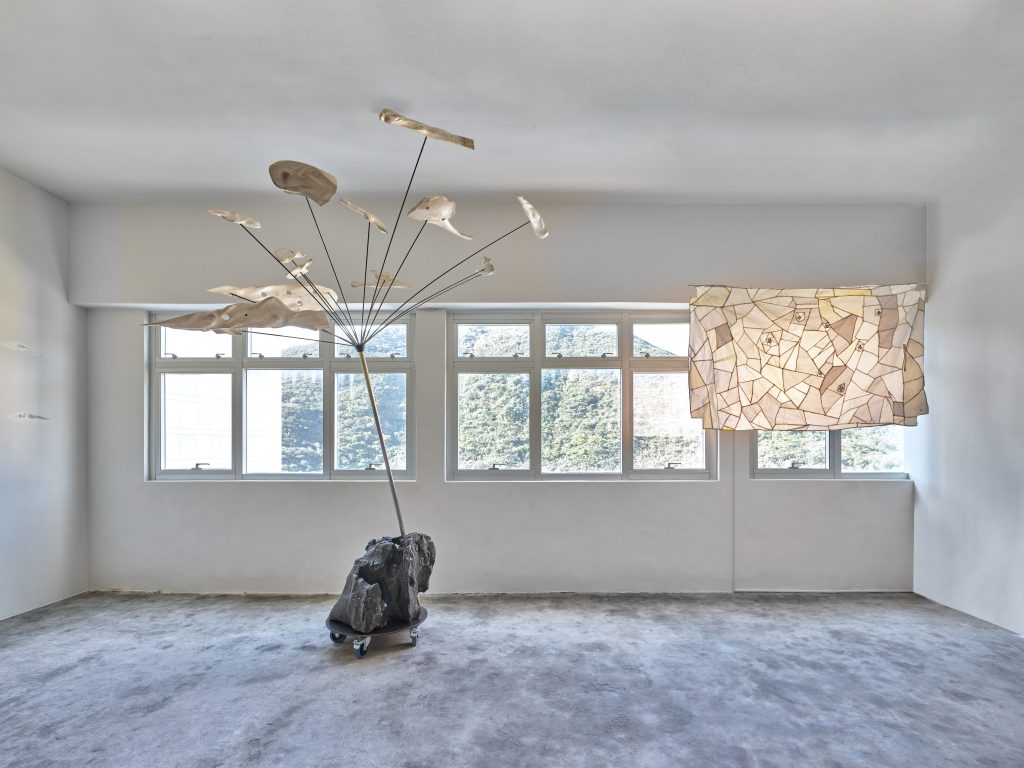
Do you think this is a good time in Hong Kong for installation art and sculptures? It seems we are seeing more such works in galleries and public places.
We do see more in shopping malls, property developments, commissions by the MTR and other public areas. They’re not always so large in scale, though, as the main priority for indoor spaces and some outdoor ones is the safe flow of people. I worked for the MTR at Hung Hom station and got fascinated by its lost property room. The things that people lose can have an emotional value, so I made sculptures casting some of these everyday items, like a hat or an umbrella in metal (recycled aluminium). I also created seating that looked like bags and suitcases, carved out of stone, and made images of bag fabric patterns on glass panels at the station.
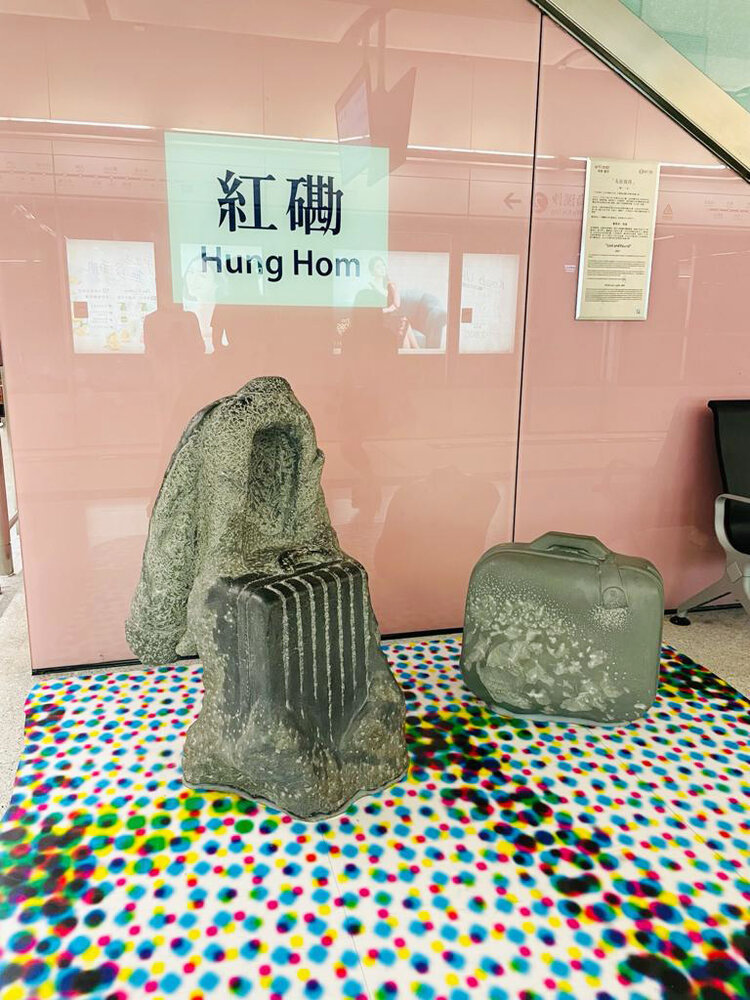
You grew up in Fujian province in mainland China. How old were you when you came to Hong Kong and did you know from a young age that you wanted to be an artist?
I arrived when I was 12 with my sister and my mum in 1985, and I had to work in a factory after school. I liked drawing but my family was not keen on me being an artist – “You won’t make money from this,” they said. My mum wanted me to be a doctor or an accountant. I told her that if she wanted me to study science or maths, I didn’t think I would do that well, but if I studied art I could be number one in the class. She said if you can be happy from your studies that’s important – but you must make sure you can make money. I promised that I would, and that I’d look after her [financially] when she retired, and I did.

When you were in New York on a scholarship from the Asian Cultural Council in Hong Kong, what artwork did you produce?
It’s every artist’s dream to see the galleries of America – especially in New York. I did that and the art was so amazing that I felt unsure what artwork I could make there. I went to a Chinese restaurant one day, and heard people speaking in my hometown dialect. We just clicked, and we talked about interesting cultural differences they had noticed in New York, and I started noticing more. I made videos [on city observations – such as one called Midnight Hello, about the busy downtown streets after dark] but these were not shown in Hong Kong.
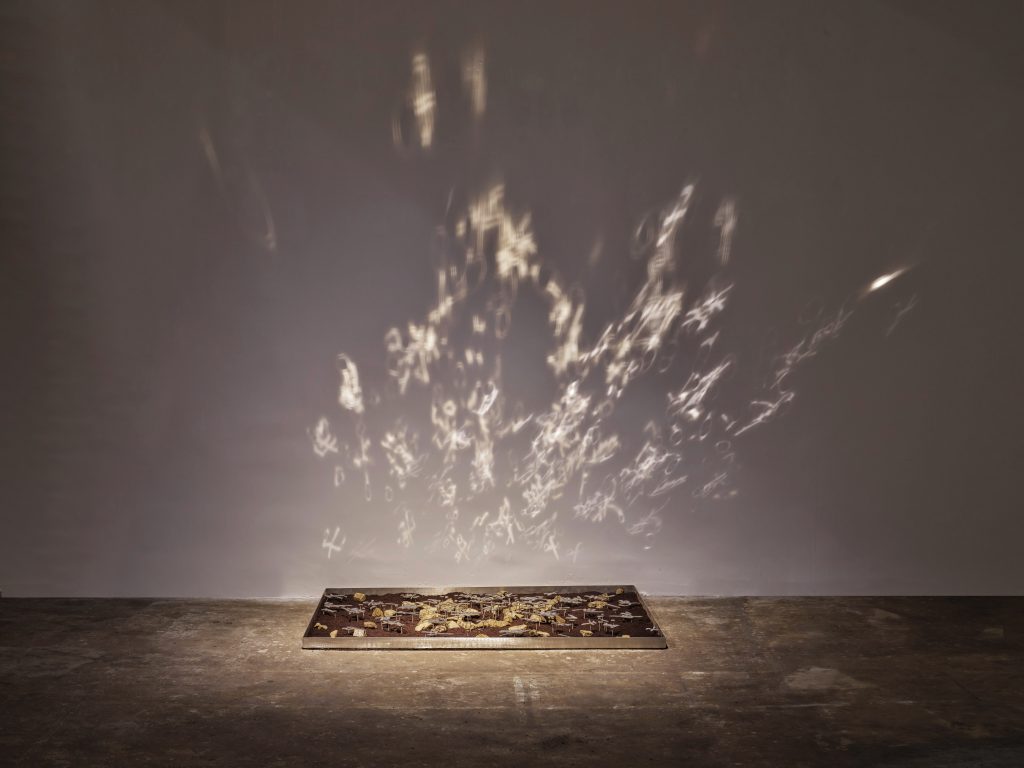
As the head of Hong Kong Art School, do you tell your students that there is a good future for artists in Hong Kong?
Definitely. I’ve told them that even if you’re from a grassroots family it’s very possible [to be successful] and I’m a role model. Making art and studying art changed my life – and made me know myself better. Students don’t have to become artists – an art education lets people think creatively and out of the box in other types of jobs, or if they’re starting a business.
Also see: Sculptor Polo Bourieau on working with stone and life in Hong Kong























































